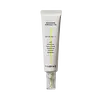What's inside
What's inside
 Key Ingredients
Key Ingredients

 Benefits
Benefits

 Concerns
Concerns

 Ingredients Side-by-side
Ingredients Side-by-side

Aloe Barbadensis Leaf Extract
EmollientCamellia Sinensis Leaf Extract
AntimicrobialGlycyrrhiza Glabra Root Extract
BleachingDaucus Carota Sativa Seed Extract
EmollientNiacinamide
SmoothingRubus Idaeus Seed Oil
EmollientIsododecane
EmollientDimethicone/Bis-Isobutyl PPG-20 Crosspolymer
EmollientButyloctyl Salicylate
Skin ConditioningCaprylic/Capric Triglyceride
MaskingTridecyl Salicylate
Skin ConditioningCamellia Sinensis Extract
AntioxidantCitrullus Lanatus Fruit Extract
Skin ConditioningDaucus Carota Sativa Extract
PerfumingHelianthus Annuus Flower
Skin ConditioningPunica Granatum Extract
AstringentRosmarinus Officinalis Extract
AntimicrobialTetrahexyldecyl Ascorbate
AntioxidantTocopherol
AntioxidantButyl Methoxydibenzoylmethane
UV AbsorberHomosalate
Skin ConditioningOctocrylene
UV AbsorberEthylhexyl Salicylate
UV AbsorberAloe Barbadensis Leaf Extract, Camellia Sinensis Leaf Extract, Glycyrrhiza Glabra Root Extract, Daucus Carota Sativa Seed Extract, Niacinamide, Rubus Idaeus Seed Oil, Isododecane, Dimethicone/Bis-Isobutyl PPG-20 Crosspolymer, Butyloctyl Salicylate, Caprylic/Capric Triglyceride, Tridecyl Salicylate, Camellia Sinensis Extract, Citrullus Lanatus Fruit Extract, Daucus Carota Sativa Extract, Helianthus Annuus Flower, Punica Granatum Extract, Rosmarinus Officinalis Extract, Tetrahexyldecyl Ascorbate, Tocopherol, Butyl Methoxydibenzoylmethane, Homosalate, Octocrylene, Ethylhexyl Salicylate
Water
Skin ConditioningDibutyl Adipate
EmollientPropanediol
SolventEthylhexyl Triazone
UV AbsorberTerephthalylidene Dicamphor Sulfonic Acid
UV AbsorberPolyglyceryl-3 Distearate
EmulsifyingNiacinamide
SmoothingBellis Perennis Flower Extract
Skin ConditioningPolymethylsilsesquioxane
Tromethamine
Buffering1,2-Hexanediol
Skin ConditioningPentylene Glycol
Skin ConditioningDiethylamino Hydroxybenzoyl Hexyl Benzoate
UV FilterPolysilicone-15
UV FilterSolanum Lycopersicum Fruit Extract
AntioxidantThuja Orientalis Leaf Extract
AntioxidantNelumbo Nucifera Leaf Extract
Skin ConditioningSimmondsia Chinensis Seed Oil
EmollientSodium Hyaluronate
HumectantHydrogenated Lecithin
EmulsifyingGlyceryl Stearate
EmollientBakuchiol
AntimicrobialBis-Ethylhexyloxyphenol Methoxyphenyl Triazine
Skin ConditioningCetearyl Alcohol
EmollientGlycerin
HumectantButylene Glycol
HumectantCarbomer
Emulsion StabilisingAmmonium Acryloyldimethyltaurate/Vp Copolymer
Glyceryl Stearate Citrate
EmollientInulin Lauryl Carbamate
Emulsion StabilisingAcrylates/C10-30 Alkyl Acrylate Crosspolymer
Emulsion StabilisingSodium Stearoyl Glutamate
CleansingBisabolol
MaskingSqualane
EmollientEthylhexylglycerin
Skin ConditioningAdenosine
Skin ConditioningMethylpropanediol
SolventSaccharomyces Ferment Filtrate
HumectantPolyether-1
Panthenol
Skin ConditioningBiosaccharide Gum-1
HumectantPolyglyceryl-10 Stearate
Skin ConditioningSodium Ascorbyl Phosphate
AntioxidantTocopheryl Acetate
AntioxidantDimethylsilanol Hyaluronate
HumectantHydrolyzed Sodium Hyaluronate
Skin ConditioningHydrolyzed Hyaluronic Acid
HumectantPotassium Hyaluronate
Skin ConditioningHyaluronic Acid
HumectantSodium Hyaluronate Crosspolymer
HumectantHydroxypropyltrimonium Hyaluronate
Sodium Hyaluronate Dimethylsilanol
HumectantSodium Acetylated Hyaluronate
HumectantRetinyl Palmitate
Skin ConditioningBiotin
AntiseborrhoeicThiamine Hcl
MaskingFolic Acid
Skin ConditioningPyridoxine
Skin ConditioningCyanocobalamin
Skin ConditioningParfum
MaskingWater, Dibutyl Adipate, Propanediol, Ethylhexyl Triazone, Terephthalylidene Dicamphor Sulfonic Acid, Polyglyceryl-3 Distearate, Niacinamide, Bellis Perennis Flower Extract, Polymethylsilsesquioxane, Tromethamine, 1,2-Hexanediol, Pentylene Glycol, Diethylamino Hydroxybenzoyl Hexyl Benzoate, Polysilicone-15, Solanum Lycopersicum Fruit Extract, Thuja Orientalis Leaf Extract, Nelumbo Nucifera Leaf Extract, Simmondsia Chinensis Seed Oil, Sodium Hyaluronate, Hydrogenated Lecithin, Glyceryl Stearate, Bakuchiol, Bis-Ethylhexyloxyphenol Methoxyphenyl Triazine, Cetearyl Alcohol, Glycerin, Butylene Glycol, Carbomer, Ammonium Acryloyldimethyltaurate/Vp Copolymer, Glyceryl Stearate Citrate, Inulin Lauryl Carbamate, Acrylates/C10-30 Alkyl Acrylate Crosspolymer, Sodium Stearoyl Glutamate, Bisabolol, Squalane, Ethylhexylglycerin, Adenosine, Methylpropanediol, Saccharomyces Ferment Filtrate, Polyether-1, Panthenol, Biosaccharide Gum-1, Polyglyceryl-10 Stearate, Sodium Ascorbyl Phosphate, Tocopheryl Acetate, Dimethylsilanol Hyaluronate, Hydrolyzed Sodium Hyaluronate, Hydrolyzed Hyaluronic Acid, Potassium Hyaluronate, Hyaluronic Acid, Sodium Hyaluronate Crosspolymer, Hydroxypropyltrimonium Hyaluronate, Sodium Hyaluronate Dimethylsilanol, Sodium Acetylated Hyaluronate, Retinyl Palmitate, Biotin, Thiamine Hcl, Folic Acid, Pyridoxine, Cyanocobalamin, Parfum
Ingredients Explained
These ingredients are found in both products.
Ingredients higher up in an ingredient list are typically present in a larger amount.
Niacinamide is a multitasking form of vitamin B3 that strengthens the skin barrier, reduces pores and dark spots, regulates oil, and improves signs of aging.
And the best part? It's gentle and well-tolerated by most skin types, including sensitive and reactive skin.
You might have heard of "niacin flush", or the reddening of skin that causes itchiness. Niacinamide has not been found to cause this.
In very rare cases, some individuals may not be able to tolerate niacinamide at all or experience an allergic reaction to it.
If you are experiencing flaking, irritation, and dryness with this ingredient, be sure to double check all your products as this ingredient can be found in all categories of skincare.
When incorporating niacinamide into your routine, look out for concentration amounts. Typically, 5% niacinamide provides benefits such as fading dark spots. However, if you have sensitive skin, it is better to begin with a smaller concentration.
When you apply niacinamide to your skin, your body converts it into nicotinamide adenine dinucleotide (NAD). NAD is an essential coenzyme that is already found in your cells as "fuel" and powers countless biological processes.
In your skin, NAD helps repair cell damage, produce new healthy cells, support collagen production, strengthen the skin barrier, and fight environmental stressors (like UV and pollution).
Our natural NAD levels start to decline with age, leading to slower skin repair, visible aging, and a weaker skin barrier. By providing your skin niacinamide, you're recharging your skin's NAD levels. This leads to stronger, healthier, and younger looking skin.
Another name for vitamin B3 is nicotinamide. This vitamin is water-soluble and our bodies don't store it. We obtain Vitamin B3 from either food or skincare. Meat, fish, wheat, yeast, and leafy greens contain vitamin B3.
The type of niacinamide used in skincare is synthetically created.
Learn more about Niacinamide